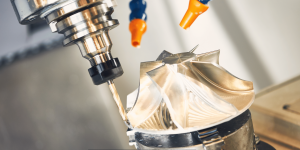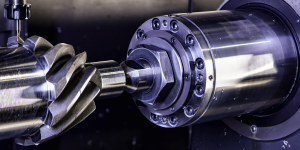Introduction
Two of the most utilized production techniques available for the production of metal components and products are machining and casting. Each has its specific benefits and drawbacks; therefore, the choice between the two depends on the requirements and conditions of a given application. In the following article, machining and casting’s different aspects discussed and compared to see which is better.
Cost Considerations
Closely related to the choice of the production method is the issue of cost, which is a significant factor of consideration. Overall, casting is considered more suitable for producing large quantities of parts. Casting requires a massive investment in the initial stages regarding mold and tools. Still, the cost per part is meagre, especially when casting thousands or millions of parts.
Machining, however, is most suitable in cases where the number of pieces needed is relatively small. Here, the setup costs for machining are significantly less than for casting because the process does not need specialized molds and tools. This makes machining the most suitable method for prototype creation and any other application that requires a short production run. The trade-off is that machining costs more per part at a high production volume.

Part Size and Complexity
The size and shape complexity of the desired parts also dictate the suitability of machining or casting processes. Casting makes it economically possible to produce huge single pieces of metal, such as engine blocks. Attempting to create such a part from a solid block of material through machining would be very costly and uneconomical.
On the other hand, casting has its drawbacks, especially in creating intricate and minor components with elaborate details. The nature of the process entails a certain degree of inconsistency and imperfection in the quality of casted components. Machining, in which material is removed from a blank, is more accurate and can produce fine detailed part shapes.
Material Options
Casting is more versatile in terms of the type of material that can be used. Most metals, such as steel, iron, aluminium, magnesium, brass, bronze, and various alloys, can be cast into finished products.
When using the machining process, the material that the finished part is machined from must meet specific criteria. Hardness, strength, machinability, and microstructure are some of the factors. This limits the range of metals used for machining parts and components. Examples of such materials include some of the exotic alloys used in aerospace industries, which may only be available in cast products.
Production Speed
Depending on the size of the required parts, one of the two methods will allow for meeting production deadlines and schedules. For numerous and tiny components, machining as a manufacturing method will generally yield products in a shorter time using automated, high-speed CNC machining centres. Today’s CNC machine is capable of producing thousands of accurately machined metal parts within an hour.
Casting is helpful because it can be parallelized. Unlike other manufacturing processes that involve adding parts step by step, casting uses many molds to pour molten metal at once. This implies that the operator can produce thousands of parts in one solidification cycle. The length of time required to make custom molds and tools must also be considered.
Secondary Processing
It is not rare for both casting and machining to be used in conjunction to yield the most favourable process. Most of the part volume and simple shape can be economically created through casting. Still, precision dimensions, surface finishes and fine detail are from subsequent operations, i.e., machining. Car engine parts such as gear blanks, engine blocks, turbine blades, etc., are examples of works produced in their raw cast forms and are typically finished by machining.
The sequence can also be reversed in that machining occurs first to produce a blank. In contrast, metal casting occurs afterward to make the final, vital part. This capitalizes on the strength of each process while at the same time seeking to eliminate their weaknesses. However, when both casting and machining processes are taken into consideration, more flexibility is afforded to the manufacturing process.
Quality Control
In terms of quality, it has been observed that machining, especially CNC machining, has the upper hand over casting as it offers more accurate and uniform results. The subtractive process is ideal to achieve precise control of the size, surface texture, and other characteristics. Since it is an operation executed in a sequence of instructions, machining also reduces variation between parts due to errors made by operators.
The level of quality that can be attained with casting relies on minimizing defects through controlling the process. Defects like porosity, voids, cracking, residual stresses, and inaccuracies involve dimensions when there is improper mold design and production parameters. Identifying internal quality using X-ray or ultrasonic testing also incurs additional costs. The gap between the casting and machining has reduced over the years due to advanced technology but is still present.
Design Flexibility
There is, however, one area where casting provides more flexibility, and that is in the creation of intricate shapes. Complex curves, cores and risers, cooling channels, and topological optimization that cannot be achieved during machining can be done in casting. Sand casting, investment casting, and die casting each offer specific design possibilities prior to further finishing.

In machining, designs have to consider the ability of tools to access certain areas of the model. The problems occur when the thicknesses are profound, the shapes are long and slender, and the spaces are enclosed if the cutting tools are not appropriately chosen. Undercuts are also tricky and usually necessitate the use of unique work-holding fixtures and creative programming as well. Thus, casting allows for some shapes, while machining allows for details.
Sustainability Impact
Some of the ways through which machining and casting can help moderate the sustainability effects of production include material and energy consumption. Since casting molds have close contours to the component shape, they employ near-net shape techniques to reduce scrap. While machining is a subtractive process that produces more scrap material, computerized tool paths do try to minimize wasted material.
One difference is that during the process of machining the scrap metal chips are more accessible to reuse and recycle than the sprues and risers of casting. Casting may also involve heat treatment processes that may consume a lot of energy. However, it is worth noting that both casting and machining can be optimized for environmental benefits.
Conclusion
The decision of whether to machine or cast (or both) depends on factors such as cost, time, quality, design, and if sustainability is necessary. Casting has less cost at larger quantities than machining, while the latter offers versatility in small amounts and accuracy. Using the knowledge of each process’s strengths and weaknesses, manufacturers can decide where best to use machining or casting when producing their metal parts.
